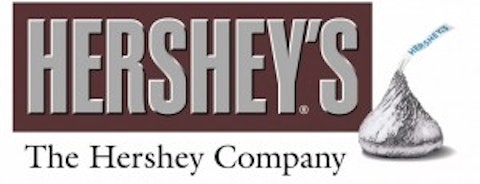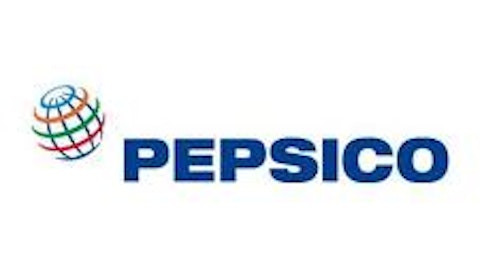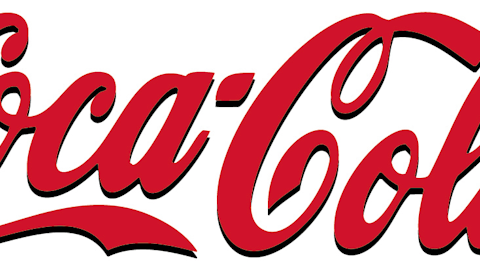The Hershey Company (NYSE:HSY) shares have been on the consistent uptrend since the market bottom of 2009, from around $32 per share in March 2009 to around $94.50 per share at the time of writing. Since the beginning of the year, Hershey has gained by around 30.8%, outperforming the S&P 500’s return of 18.6%. Could Hershey keep its rally in the future? Is it a good buy for investors now? Let’s take a closer look.
A cash cow with consistently rising operating results

In the past five years, The Hershey Company (NYSE:HSY) has managed to consistently grow its revenue and net income. While the revenue increased from $5.1 billion in 2008 to more than $6.6 billion in 2012, net income rose from $311 million, or $1.36 per share, to $661 million, or $2.89 per share during the same period.
The Hershey Company (NYSE:HSY) could also be considered a cash cow, generating consistent positive cash flow in the past 10 years. In 2012, its operating cash flow was nearly $1.1 billion while the free cash flow came in at $817 million.
Income investors might like The Hershey Company (NYSE:HSY) a lot with its consistently increasing dividend payments. Since 2003, its dividend has increased from $0.72 per share to $1.56 per share. The payout ratio seems to be quite reasonable, at around 54% in 2012.
Hershey employs some leverage in its operations. As of June, it had $1.1 billion in equity, $568 million in cash and more than $1.8 billion in long-term debt. I believe that Hershey will keep increasing its dividend payment to shareholders because of its cash-cow generating capability, a reasonable payout ratio and high interest coverage of 11.3.
A lot of potential for growth
Looking forward, Hershey still has much room for future growth with its international expansion. The company expects to generate around $1 billion in international net sales by the end of 2014, with China being a great growth engine. China is considered Hershey’s second-largest market. In the next five years, Hershey estimates that it could deliver sales growth in China by six or seven times by increasing advertisement, its product portfolio and distribution density.
Hershey is trading at around $94.50 per share, with the total market cap of $21.2 billion. The market values Hershey at as much as 15.2 times its trailing EBITDA (earnings before interest, taxes, depreciation and amortization). At the current price, Hershey offers investors dividends with a yield of 1.8%.
The highest valuation compared to its peers
Compared to Mondelez International Inc (NASDAQ:MDLZ) , Hershey has a much higher valuation. Mondelez is trading at $31.60 per share, with the total market cap of around $56.4 billion. It is valued at 13.8 times its trailing EBITDA. Mondelez is the global food company in emerging markets. It has the leading global market share in several food categories, including biscuits, chocolate, powdered beverages and candy while the gum and coffee categories both ranked the second in the global market.
For the full year, Mondelez International Inc (NASDAQ:MDLZ) expects to experience around 5% to 7% organic growth while EPS is estimated to fluctuate in the range of $1.55 to $1.60 per share.
Recently, Mondelez has been the target of Nelson Peltz, a famous activist investor. Peltz proposed that Mondelez should be merged with PepsiCo, Inc. (NYSE:PEP) at around $35 per share in an all-stock deal. At $35 per share, Mondelez would be valued at only 14.4 times its trailing EBITDA, a discount to the historical EBITDA multiple of food companies at 16.
A merger of PepsiCo, Inc. (NYSE:PEP) and Mondelez could create a global snack leader with as much as $6 billion in cost and revenue synergies. After a merger, the combined company would be valued at 8.6 times its 2013 EBITDA, including $3.7 billion in cost synergies.
After merging, Peltz also suggested spinning off the beverage business. Grouping the snack business and the beverage business together has not delivered PepsiCo’s shareholders full potential value because those two businesses are “fundamentally different,” he said. While the snack business is quite profitable, generating 18% EBIT margin, the beverage business’ EBIT margin is much lower at only 12%.
Moreover, PepsiCo’s beverage business requires a lot of capital expenditure, especially after consolidating bottling operations. Peltz believes that PepsiCo would maximize shareholders’ value by separating those businesses into two pure-play companies. PepsiCo is trading at $85.30 per share, with a total market cap of $131.9 billion. The market values PepsiCo at around 13 times its trailing EBITDA.
My Foolish take
With the leading global position in chocolate, consistent positive free cash flow, a reasonable amount of leverage and increasing dividend payments, Hershey is really a long-term pick for patient income investors. Investors might also consider PepsiCo as an opportunistic play on the possible separation of the beverage and snack business and/or the merger with Mondelez.
Anh HOANG has no position in any stocks mentioned. The Motley Fool recommends PepsiCo. The Motley Fool owns shares of PepsiCo.
The article Chocolate Is a Delicious Business for Investors originally appeared on Fool.com and is written by Anh HOANG.
Anh is a member of The Motley Fool Blog Network — entries represent the personal opinion of the blogger and are not formally edited.
Copyright © 1995 – 2013 The Motley Fool, LLC. All rights reserved. The Motley Fool has a disclosure policy.


